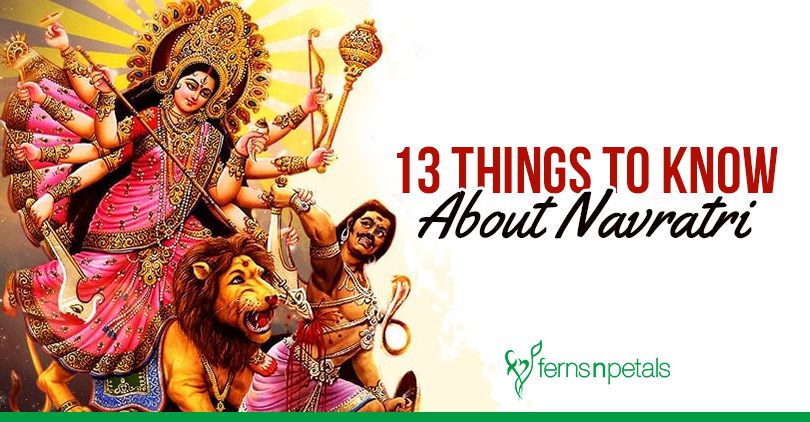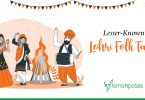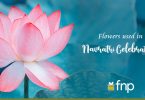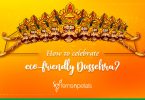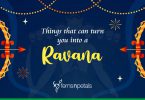Navratri is one of the much-awaited festivals in India. This year it is starting on 10th October, Wednesday and ends on 18th October, Thursday. Everyone around would dress up in their best attires. Those who stay away from their homeland would come back home while those who could not come back would miss home. Many would fast for all the nine days. Many would take part in the cultural programs. In a nutshell, it would again be a time of fun, excitement, food, and memories with near and dear ones. Before, you all plunge into the celebration mode, know some interesting facts about Navratri and double the exhilaration of the celebration.
- The word “Navratri” comes from two words – “Nav” meaning Nine (9) and “Ratra” meaning “Night”. The celebration of this festival stretches for 9 nights and thus the name Navratri is given.
- Each day of Navratri is for an incarnation of Goddess Durga. For these 9 days, people worship 9 different incarnations of the Goddess. People believe that each of these 9 goddesses has immense power and they all combines to form Maa Durga.
- This Navratri occurs five times a year and a 9-day celebration follows. The months of Navratri is celebration are: March/April, June/July, September/October, December/January, and January/February. But the Sharad Navratri held during September/October is the most popular one.
- Dusshera is the day next to Navratri. There is a different history behind it too. Lord Rama won the war against the demon king Ravana in Sri Lanka on this day. So, to mark that win, people make big effigies of Ravana and burn them. This signifies the victory of good over evil.
- Just after 20 days of Dusshera celebration comes another great festival – Diwali. On this day, Lord Rama along with his wife Sita and brother Lakshmana returned from 14 years of exile to his motherland, Ayodha.
- People worship Maa Durga in various forms of Shakti or Power all through Navratri. They are: Durga, Bhadrakali, Amba, Annapoorna Devi, Sarvamangala, Bhairavi, Chandika, Lalita, Bhavani, and Mookambika.
- As per our mythological tales, Mahishasura – the king of Asuras was half buffalo and half man. He worshipped Lord Brahma with great devotion and the Lord was very happy seeing his dedication and thus told him to ask for anything. So, Mahishasura asked Lord Brahma to grant him immortality. Lord Brahma said that no man could kill him. Therefore, Mahishasura became the strongest man and he wanted to rule both earth and heaven and soon started a fight with the Gods. When the atrocities of Mahishasura became unbearable, all the Gods decided to create Devi Durga to kill Mahishasura. The boon of Lord Brahma was “No Man Could Ever Kill Mahishasura”. Well, that means a powerful woman can kill him. Thus, Goddess Durga came into form with all the supreme powers of all the Gods. This mission was a success.
- Another story says that Mahishasura wanted to marry Goddess Durga. Goddess Durga declined the proposal. But she also said that she would marry Mahishasura only if he could defeat her in a battle. This is the battle that continued for 9 long days and at the end of it, Devi Durga beheaded Mahishasura.
- As per another mythological tale prevalent in Kerala, Mahishi – the sister of Mahishasura continued this battle even when her brother’s death.
- There is a belief in the Eastern part of India that Daksha’s daughter Uma or Parvati who married Lord Shiva and went to Mount Kailasa comes to this earth or her parental home every year during Navratri. She comes with her four children – Lakshmi, Saraswati, Kartik, and Ganesha. Two of her best friends or sakhis known as Jaya and Bijaya also comes with her. That’s why Navratri is also signified as a homecoming for all the married women.
- The devotion and prayer that we all follow during Navratri keep us mentally healthy. The fasting for one-two or nine days along with other atonement strengthen us to fight diseases and keeps us physically fit.
- Some ancient sages and scholars associated this Navratri time of worship to thank the divine forces properly. Because this divine or spiritual powers provide not only the humankind with powers but also gives enough energy to the earth to move around the sun which causes other changes in the climate resulting to a balance in the universe.
- These 9 days are further divided into a set of three days and each set has some significance. During the first three days, the Goddess Durga is invoked as a powerful force. She is worshipped as Durga who comes to earth to destroy all impurities, evils, and flaws. In the next three days, she is worshipped as Lakshmi who provides wealth and joy. For the last three days, people worship the Saraswati incarnation who is the supreme fountain of all learnings.
Hope you liked reading these interesting facts about Navratri. So, now you can share this information with your friends and relatives and celebrate during this festival even more!

